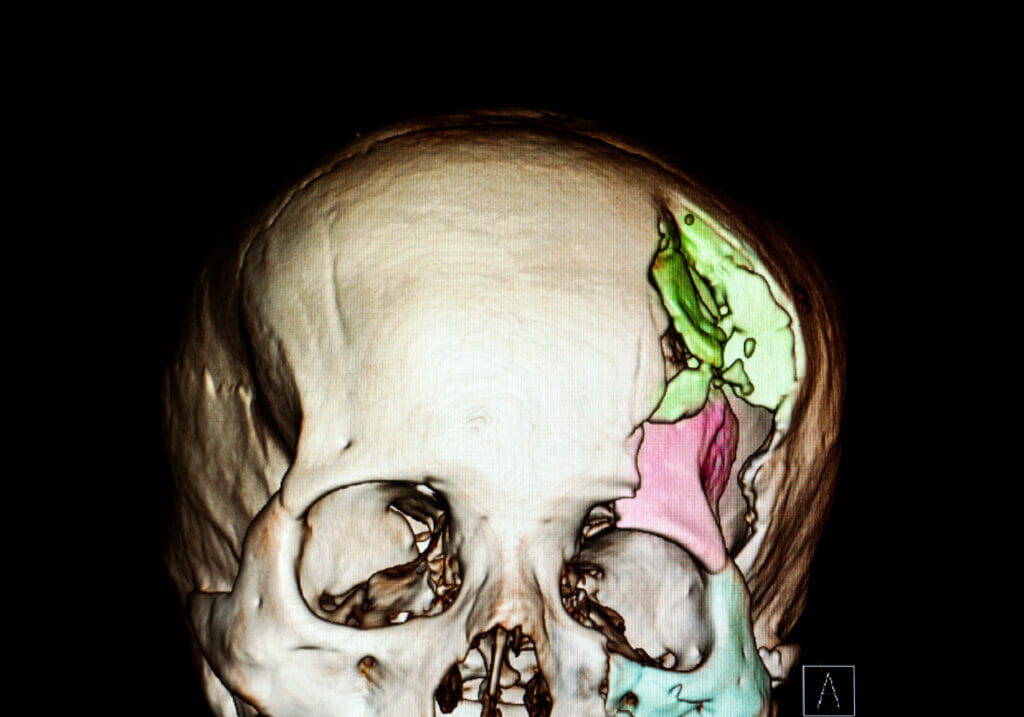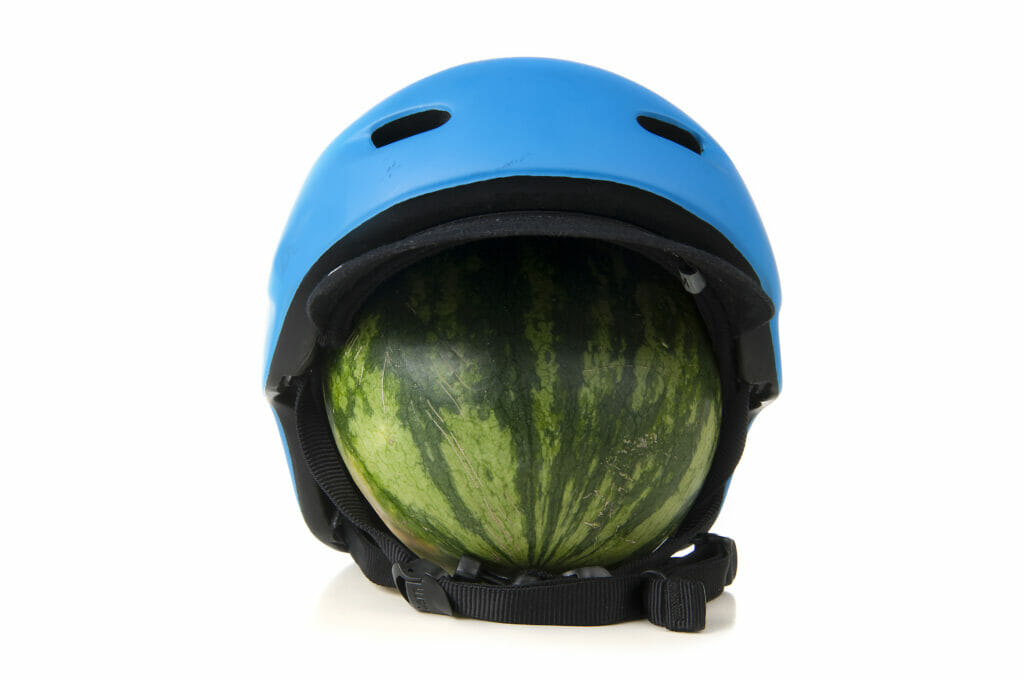One might think that in today’s Health and Safety conscious society there would be universal support for the wearing of cycle helmets. However, amongst the cycling community, opinion remains sharply divided on the issue of making helmet use mandatory. Advocates for the wearing of cycle helmets have rider safety as their primary concern, but critics claim that making helmet use compulsory will discourage people from cycling, meaning that those who choose not to would miss out on the health benefits that regular cycling can offer.
Hawkins’ Road Traffic Collision Investigation Team takes a look at the safety benefits that a good quality cycle helmet can offer to those who are unfortunate enough to be involved in either a collision, or even a simple fall from their bicycle. She also looks at how the mechanics of the accident can be analysed to assist a medical expert in determining the extent to which a cycle helmet might have reduced any head injuries sustained by the cyclist.

A critical factor in collisions involving cyclists is that the presence of the bicycle between their legs affects the way the cyclist falls, compared to the way a pedestrian would fall. A cyclist’s inability to adjust their feet means that their head is considerably more likely than the head of a falling pedestrian to strike either the ground or other surrounding objects; a cyclist’s head impact speed is also likely to be higher as a result of the manner in which they topple from, or are thrown over the handlebars of, their bicycle.
Research carried out at by Bourdet et al. (“Head impact conditions in the case of cyclist falls” by N. Bourdet, C. Deck, R. Carreira and R. Willinger, published by The Institution of Mechanical Engineers in 2012) studied this effect along with other issues affecting cyclists. The authors analysed cyclist falls using over 1000 computer simulations to determine the locations and speeds of head impacts with the road surface for cyclists who have either fallen sideways from their bicycles or fallen forwards after colliding with a kerb. The results of this research can be used to estimate the likely head impact speeds for comparable real world incidents, which can then be used to determine the risk of skull fracture and the effect that wearing a cycle helmet might have had for any given accident.
All cycle helmets sold within the United Kingdom must meet the requirements of British and European Standard BS EN 1078:2012 “Helmets for pedal cyclists and for users of skateboards and roller skates”, which requires that “The helmet shall give protection to the forehead, rear, sides, temples and crown of the head”.
Two principal impact tests are defined in the Standard. The first involves an instrumented dummy head‑form wearing a helmet being dropped onto a flat anvil to simulate the helmeted head striking the road and the other replaces the flat anvil with a kerbstone anvil to simulate the helmeted head striking a kerb. The tests simply require the peak acceleration of the head‑form in each case to be limited (by the helmet) to 250 g [where g is the acceleration due to gravity, 9.81 m/s2] for a head velocity of 5.42 m/s on a flat anvil and 4.57 m/s on a kerbstone anvil.
Studies published at the time that the Standards were being prepared suggested that peak linear accelerations of 250 g and above bore a significant risk of skull fracture, which is presumably the reason this figure was selected by the authors of the Standard as an upper limit for helmet approval under the Standard. However, whilst the peak linear acceleration experienced by the head during an impact almost certainly has an influence on the severity of head injury, current engineering and medical research supports other measures that are not assessed by the Standard, and which are probably better indicators of injury risk–meaning that the premise on which the Standard is based is somewhat outdated.

The normal component of the cyclist’s head impact speed, on its own, can be considered to be a linear impact, which is the type of impact covered by BS EN 1078. However, the tangential component of the head impact speed is not addressed in the test specifications. Importantly, the tangential component of the head impact speed results in forces that cause rotational acceleration of the head. The two components combined are commonly described as an oblique impact.
In order to determine the full effectiveness of cycle helmets, oblique impact tests need to be carried out, and a direct comparison must also be made between the effects on dummy head-forms both with and without helmets. Research carried out by McIntosh et al. (“Bicycle Helmets: Head Impact Dynamics in Helmeted and Unhelmeted Oblique Impact Tests” by A. McIntosh, A. Lai and E. Schilter, published in the Traffic Injury Prevention journal in 2013) involved dropping a dummy head onto a striker plate that was moving in a direction perpendicular to the direction of the dummy head’s travel, thus creating (in a controlled way) the two perpendicular components of impact force. Most of the tests were carried out both with and without a helmet, although unhelmeted tests were stopped at a 1 metre drop height for a 15 km/h striker plate speed, or at a 0.5 metre drop height for a 25 km/h striker plate speed, “because head‑form loads were very high”. However, the testing continued at both higher drop heights and faster speeds for helmeted dummy heads, presumably without fear of breaking the dummy head, which in itself is an indication of the effectiveness of helmets (particularly on human heads which most would consider infinitely more valuable than a dummy head).
The maximum linear acceleration at the centre of mass of the dummy head (MAcc) and the head injury criterion (HIC15), as determined during the tests, can be used to determine the likelihood of a skull or brain injury. The HIC15 is not a direct measure of any physical quantity, but a calculated value, which can be used to compare the likelihood of head injuries occurring, based on statistical analyses. The test results can be used for comparison purposes to determine the likely differences in linear and rotational acceleration between a head impact both with and without a helmet. The wearing of a helmet was found to lead to an 80% reduction in HIC15 values and a 73% reduction in MAcc during temporal impacts (i.e. impacts to the side of the head) at the highest impact speeds for which tests without helmets were carried out; similar results were also obtained for occipital impacts (i.e. impacts to the rear of the head).
Published research indicates that that a value for HIC15 greater than 600 and MAcc greater than 160 g represents a 25 to 30% risk of serious (AIS 3) or severe (AIS 4) skull or brain injury (AIS is the Abbreviated Injury Scale, which is commonly used to classify the severity of injuries). These values can be used in conjunction with a reconstruction analysis of real-world accidents to determine the likely severity of injury for both helmeted and unhelmeted cyclists involved in any given incident. In other words, it can be used to determine if the outcome would have been different had the cyclist been wearing a helmet. The answer to which is almost invariably “YES”.


If the speed of the head impact sustained by a cyclist in a real-world accident is similar to those used in the tests, the extent of the reduction in HIC15 and MAcc for a helmeted cyclist, relative to an unhelmeted cyclist, would almost certainly be similar to the results achieved during those tests.
If the head impact speed in a real-world accident is greater than those used in the tests, the extent of the reduction in HIC15 and MAcc might still be similar to those achieved during the tests, although it might be lower. This is because there is a limit to the amount of energy any impact attenuating material can absorb before it “bottoms out”, i.e. becomes fully compressed. As such, it is not possible to be certain that any helmet sold for use in the United Kingdom would be as effective at higher speeds as it would be for lower speeds. However, in a real-world accident, even if the head impact speed is high enough to cause the impact attenuating material to “bottom out”, there would still be a significant reduction in head acceleration and the protective padding of the helmet, being softer than the road surface, would spread the impact force over a larger area than would have been the case without a helmet. This is because the rounded surface of a head, when colliding with a flat, rigid surface, will experience that force over a very small area, resulting in a higher pressure and greater risk of fracture. A softer material (such as the lining of a helmet) exerting the same force (and deceleration) on the head will deform around the surface of the skull, thereby spreading the force over a larger area, resulting in a lower pressure and lower risk of fracture. For example, published research on this effect indicates that a 50% risk of skull fracture was achieved at a HIC15 value of 500 for a head impact with a hard surface (such as a road). For a head impact with a softer surface (though still a surface harder than the protective padding in a helmet), a 50% risk of skull fracture occurred with a much higher HIC15 value of 1240, demonstrating a significant reduction in skull fracture risk for a helmeted cyclist in any accident scenario.
It is not possible to state categorically that an impact at a certain speed will lead to a particular outcome – only that an impact at such a speed is statistically likely to lead to that outcome. The application of impact mechanics to the question of the protection that might have been offered by a helmet is based upon the assumption of a ‘statistically average’ response, but no case is ‘statistically average’ in every respect. Nevertheless, the information can be of considerable assistance to a medical expert in determining the likely effect that a helmet will have had in any given accident.
In summary, the overwhelming weight of scientific evidence is that cycle helmets save lives and reduce the risk of a cyclist receiving catastrophic life-changing brain injuries during an accident. Careful analysis of the specific circumstances of any accident can also provide sufficient information to enable a medical expert to determine whether or not the wearing of a helmet would have resulted in a different outcome.







